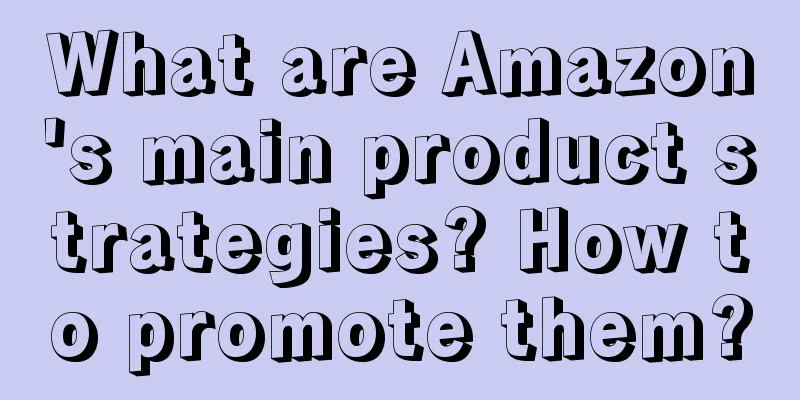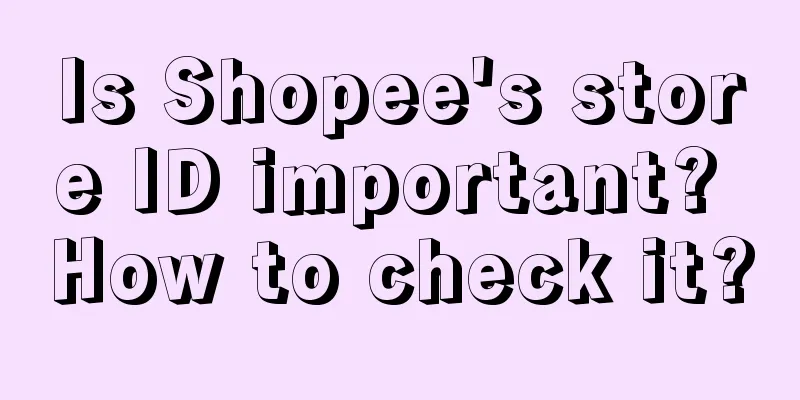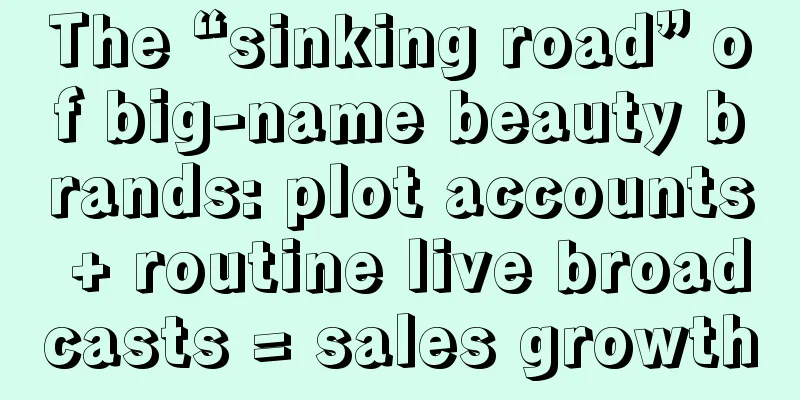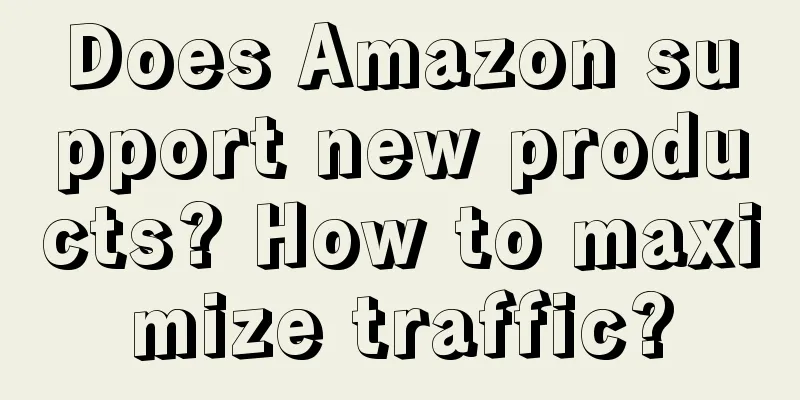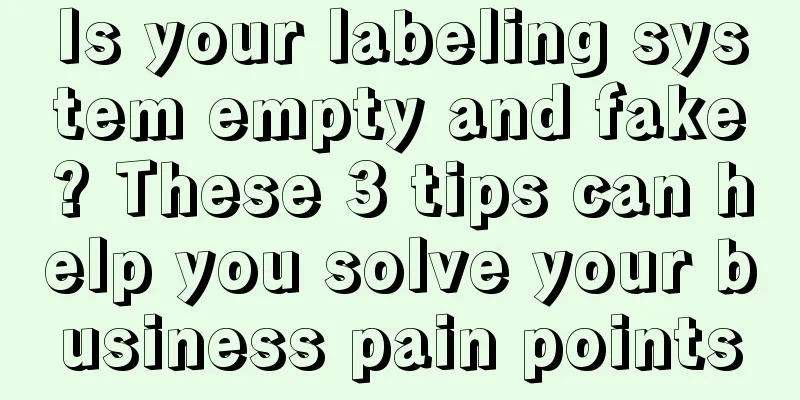How to amplify differentiation, 4 rules, 3 laws
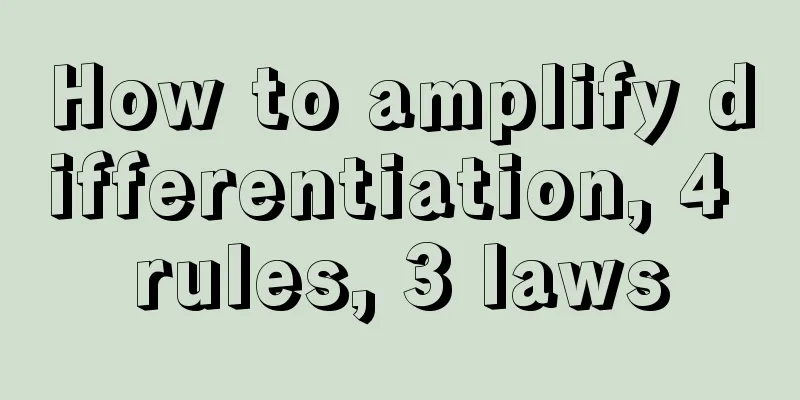
1. Four Differentiations1. Based on product features and benefitsThe features and benefits of a product are aligned with basic needs, no matter how complex the purchasing behavior. Remember, the final product relies on functions and benefits to meet consumer needs. If you look at the big single products, which one is not sold by selling basic models? What is a basic model? It means that the product meets the basic functions and basic benefits of consumers. The more consistent the reason is with consumers’ perception of product functions and benefits, the better and stronger the reason is. For example, Robam’s powerful range hoods are based on consumers’ perception of product functions and benefits, and then spread to the purchase reason appeal. 2. Make yourself clear and identify your opponentsYou need to make it clear who you are, who you are, and what you are. Only when you make yourself clear, the difference between you and others (opponents) will naturally become clear (difference, competitiveness). Unless you want to take advantage of the situation and take advantage of the strength, it is best not to confront, let alone chase - the mistake of Fei Ke La is that it took advantage of the situation without opposing. In the end, the mantis stalked the cicada, but the oriole was behind, and Sprite took a big advantage. If you define yourself clearly, everything else will be clear; if you don’t define yourself clearly, you will be easily disrupted by your competitors’ information. In business competition, the strategy of following up is not to follow, but to go around and “go against” the opponent—define and make up your mind. 3. Drama + Credibility + Function/BenefitThere is a basic logic for extracting reasons: dramatic expression + credibility + function/benefit. Dramatization is communication, credibility is conformity to cognition, and function/benefit is the foundation. Only dramatic expression will lead to the problems of Xiangpiaopiao in the later period. From trotting around the earth three, four, five, six, seven to Xiangpiaopiao being slightly hungry and sleepy, it is actually filling the gaps in the early period. If it is over-dramatized, it will become a case of buying the casket and returning the pearl, or even go in the opposite direction. If the reason for purchase is separated from function/benefits, it will eventually cause consumers to be confused during the purchase process: why should I choose you? What is the reason for me to choose you? 4. The language should have a sense of picture and bring out the pictureIn addition, the product information conveyed can inspire potential consumers to associate with the picture (listen to the sound of frogs), that is, the information should have a sense of picture. At the same time, the picture should also have information and convey information. When conveying information, brands should achieve the seamless connection between information and images as mentioned above. Once the words are spoken, the images will appear in the minds of consumers - once Remy Martin is opened, good luck will come naturally. Often, we tend to simply understand that information needs to have a visual sense as text + pattern, or even just putting a pattern next to the text. In fact, the information we are talking about is not to create information, but to find information that meets consumers' certain cognition of the brand (category, characteristics). Don’t create, but discover - creation is often unfamiliar, while discovery is familiar, discovering the already existing and familiar information - the consumer’s existing understanding of the brand (category, characteristics). For example, the boss emphasizes the strong suction of the range hood. The strong suction comes from the consumers' perception of the range hood. Consumers think that the range hood with strong suction is better. This is the consumers' perception of the range hood. However, in conveying information, we need to present the information of strong suction in the form of pictures. What kind of pictures can help to show the strong suction and convey the strong suction? Obviously, it is not the blue whale that the boss chose. The whale is big, but it does not help consumers associate it with strong suction. This is the meaning of the picture to have information, that is, when you see the picture, you think of the information, and when you hear the voice, you awaken the picture memory - the picture should have a sense of information, and the information should have a sense of picture. The two layers of information and images are often seen in brand communication, such as the ROBAM range hood above, which has great suction power, while the Blue Whale is just a little bit behind. Another example: the "green grid" of Chubang is very "eye-catching", but it is far from the relationship with "sunbathing for 180 days". Sunbathing for 180 days is a craft, but what we want to support is the freshness. The significance of the picture is to establish a connection between the two. The green grid is good and is a symbol of the dining table, but it has nothing to do with 180 days and freshness. The purpose of brand communication is to convey the message that the brand wants to convey and to help the brand occupy the mental space it wants to occupy. The information must have a visual sense and the picture must convey information. The prerequisite is to find the information that already exists in the consumer's cognition. 2. Make good use of USPUSP stands for "Unique Selling Proposition" which means a unique selling proposition or "unique selling point". Many times we tend to go to two extremes, either believing that it is all truth and worshipping it as if it were a god, or thinking that it is worthless and trampling on it underfoot. The same problem exists in our understanding of unique selling points. In fact, USP can be used to spread differentiation, and it can even be the best slogan to spread differentiation. The premise is that on the basis of clear core differentiation, when expressing it dramatically, we still need to learn USP. However, if USP is separated from the core differentiation, it is pseudo-differentiation and can easily become a self-congratulatory product copywriting. What consumers get from advertisements is not what companies rigidly assign to advertisements, but what is discovered in the potential consumers’ cognition (what potential consumers intend but do not express) - differentiation is based on the differentiation of consumers’ cognition of category characteristics. In other words: differentiation is first of all the category standing out, and then the uniqueness and uniqueness of the brand. Without this, it becomes a self-congratulatory copywriting. How to avoid self-satisfaction? First of all, we need to distinguish the relationship between differentiation, profit points, and selling points. The three are a logical closed loop that progresses layer by layer. The core is to get through from the difference point to the profit point. The unique point of difference comes from consumers' recognition of category characteristics (i.e. brand positioning), and the point of interest is the functional value, experience value, and emotional value brought about on this basis. That is, the point of difference comes from consumers' recognition of category characteristics, and the point of interest is the function, value, and experience satisfaction brought about by the recognition of category characteristics. This is why we emphasize that you should not easily rely on USP (unique selling point) without clarifying the relationship between differences and benefits - it is easy to go astray. The essence of differentiation is to occupy the primary characteristics of the category. Benefits are just an extension of the characteristics, and USP is a tool for dramatic expression. Distinguish between differences and benefitsThe point of difference is what makes you different from others, and it is the real distinction between you and your competitors, while the point of benefit is the benefit that your point of difference brings to consumers. When the two are not consistent, you will find that consumers' perception of the brand is often focused on the point of difference rather than the point of benefit. This is - different is better than better. First, choose what features. Secondly, what kind of difference points are occupied. Third, what kind of interests should be spread. Finally, use the USP to write a good drama. Especially in the early stage of the category (early stage of the market), consumers have category awareness but brand awareness is relatively low. This stage is a typical case of communication winning over no communication, USP winning over brand image, and of course, the final outcome is that differentiation wins over no differentiation. For example, Chubang is showing off here, appealing to the two most important points of soy sauce for consumers: "delicious taste" and "natural safety". This USP advertising is effective. Chubang's growth rate in recent years has also been faster than that of the soy sauce brand leader Haitian Soy Sauce, ranking second. The positioning is delicious taste, and the differentiated production process (natural sun-drying for 180 days) is the differentiation slogan of its positioning. This is similar to the "peeled tomatoes for ketchup" made by Trout and Reese in "Positioning". In addition, one of the ten types of differentiation Trout mentioned in his speech in China is "production method". Page 49 of "Two-Hour Brand Literacy" clearly states: "After having brand positioning, USP can also become the most differentiated slogan for communication positioning." In the same period, Haitian was still using the brand image advertisement of "the taste of happiness" in its advertising appeal. It is not difficult to understand that the premise of phased effectiveness is that the opponent is making mistakes. Later, Haitian also began to follow Chubang in its publicity, but did not find an effective advertising appeal point. In the final analysis, it was still because of the lack of understanding of category characteristics, differentiation, and consumer cognition. In any case, eventually you have to occupy a characteristic, and this characteristic is your point of differentiation. The benefit point is the sense of value given to customers by occupying the characteristic and creating differences (this sentence is a bit confusing, it is recommended to read it 2 or 3 times). Haitian vs. Chubang: The soy sauce category market is a big market. If you can start with the new characteristics of the category, there are still many opportunities. Chubang has the characteristics of freshness and the USP of 180 days. Haitian cannot follow suit, but must fight in the opposite direction and in a roundabout way. If we imitate and follow, the result can only be to strengthen consumers' cognition of Chubang. Moreover, it is difficult for Haitian to surpass Chubang's dramatic expression: "Dry it here for 180 days". For example, "original drying". The concept of "original drying" here is the characteristics extracted from the category and consumer cognition. Focusing on the characteristics of "original drying", we find the difference and then the dramatic expression of USP. 3. 3 rules to clarify: what to buy, where to buy, which one to buy1. Category selection, what to buy?When you go to a coffee shop, you often encounter similar questions: What do you want to drink, tea or coffee? It is obvious that tea and coffee are two different categories (category: a collection of products in the consumer's cognition). When buying mineral water, you think of Nongfu Spring, and when buying cola, you think of Coca-Cola. The brand that occupies the largest share in our minds and can be blurted out becomes a strong brand in the category. When there are no strong brands in a category, consumers will directly express their needs with the category itself. For example: buy some bananas, eat an apple. When there are strong brands in the category, we may say: buy some Chu oranges to try. Consumers think in terms of categories (what to buy) and express with brands (which one to buy). Category is the entrance to demand. The meaning of this sentence is that you must learn to use category words to intercept demand, and then say brand = category. 2. Where to buy? Channel brandJD.com, 7-11, and Walmart are essentially different channel brands, representing different channel attributes and having different channel characteristics. Different channel attributes mean that the people who buy things on the channel are different, which in turn forms the unique characteristics of the channel - the channel is the person, and the person is the channel. JD.com (e-commerce), 7-11 (convenience store), and Walmart (supermarket). The choice of channel brand is to answer the question of who the customer is and where the customer buys. Of course, we can also use the logic of people, goods, and places to look at it. For example, to buy home appliances, go to JD.com VS Tmall. That’s enough. We are more familiar with product brands, and often ignore the value of channel brands. Strong channel brands will become the entrance of traffic, and then use traffic to lead manufacturers. What channel you choose to enter is essentially because of the people behind the channel. Four Channel Focuses
3. Which one to buy? Product/BrandWe are familiar with product brands, such as Nike vs. Adidas, Mengniu vs. Yili. If you understand what to buy and where to buy, you may know why product brands are not simple brand names (that is just a trademark) but represent categories or occupy characteristics, thus becoming the first choice of customers in the competition. For example, for cheese, choose Meike Landou vs. Meifei, 0 sugar cheese sticks. 4. Selecting ( ) has ( ) functions and satisfies ( ) interestsIn early markets, where almost all purchasing decisions are made by technology enthusiasts and visionaries, the primary value areas are technology and product - Crossing the Chasm. For example: Lululemon uses LUON patented fabrics and Silvere scent anti-odor technology to achieve softness, comfort and fit. For example: stretching a tight vest to cover part of the buttocks when worn with yoga pants; adding unique designs such as "hidden pockets", "double-sided wear" and "night flash". It not only solves the problem of stretchability of yoga pants during exercise, but also ensures that women will not expose their flesh-colored skin when doing any yoga poses, and avoids the appearance of camel feet through cutting. At the same time, compared with ill-fitting dance clothes, Lululemon's yoga pants highlight women's body lines and hip curves. Yuanqi Forest: It uses ingredients (water, erythritol, carbon dioxide, etc.), and has the functions of (low sugar, 0 fat, 0 calories), which satisfies the interests of users (who want to drink beverages but are afraid of getting fat), so it tastes good and does not worry about getting fat. Xiaoxiandun: It uses (95℃ constant temperature stewing) technology, and has the function of (maximizing nutrient retention), satisfying the interests of users (who want to eat bird's nest but are not convenient to process it). Therefore, if you want fresh stewed bird's nest, look for Xiaoxiandun. San Dun Ban: It has chosen to (self-build the entire chain from "roasting-extraction-freeze drying"), has the function of (dissolving in any liquid at any temperature), and meets the users' interests of (quality + convenience). Therefore, if you want premium instant coffee, choose San Dun Ban. Jane Eyre: Only (raw milk, sugar, lactic acid bacteria) are used as ingredients. It has the function of (healthy, no additives) and meets the (health, safety) interests of users. Therefore, this is Jane Eyre, raw milk, sugar, lactic acid bacteria, nothing else. Author: Houshan Keju, Source: WeChat public account “Lao Gao Business and Brand”. |
<<: Walking on the road, I am a poet
>>: With 1 report, you can master data analysis and leverage stock conversion!
Recommend
Invest 280,000 yuan and earn 10,000 yuan a month. Can shared power banks still make money?
After experiencing rapid growth in the early stage...
How does Shopee purchase goods from 1688? What are the procedures?
Many sellers choose to open stores on the cross-bo...
How to appeal Amazon account association? What are the steps?
Many people on the Amazon platform did not pay att...
From "God of War" to "Black Myth: Wukong", a game startup's ten years of courage
From "God of War" to "Black Myth: W...
What was Amazon’s Singles’ Day sales volume in 2020? How to increase sales?
Now, in addition to Taobao, Tmall, JD.com, and Pin...
Spending the budget of a top star to sign an IP, what is the purpose of Juewei Duck Neck collaborating with The Legend of Zhen Huan?
This article will take the collaboration with &quo...
The 9.9 war brought down my coffee shop
The coffee market is undergoing a reshuffle recent...
From imitation to transcendence, learn to "copy homework" from Bawang Tea Princess
Bawang Chaji, a brand that came from behind in the...
Digital Marketing: 4 Commonly Used User Segmentation Models
This article introduces four commonly used user se...
An alternative reflection on Zibo barbecue
Before and after the May Day holiday, the city of ...
Can Amazon only log in on one network? What happens if I log in on different networks?
In the digital age, Amazon, as an e-commerce giant...
Business analysis, how to diagnose business problems
This article starts from the business diagnosis of...
Can individual business owners do business on Amazon? What are the requirements?
Amazon is a relatively old cross-border e-commerce...
What are the problems with temu? Is temu cross-border e-commerce worth doing?
The temu cross-border e-commerce platform has its ...
The benefits of TO B brand marketing: demonstrating professional capabilities and building a foundation of trust
This article explores in depth the core benefits o...

